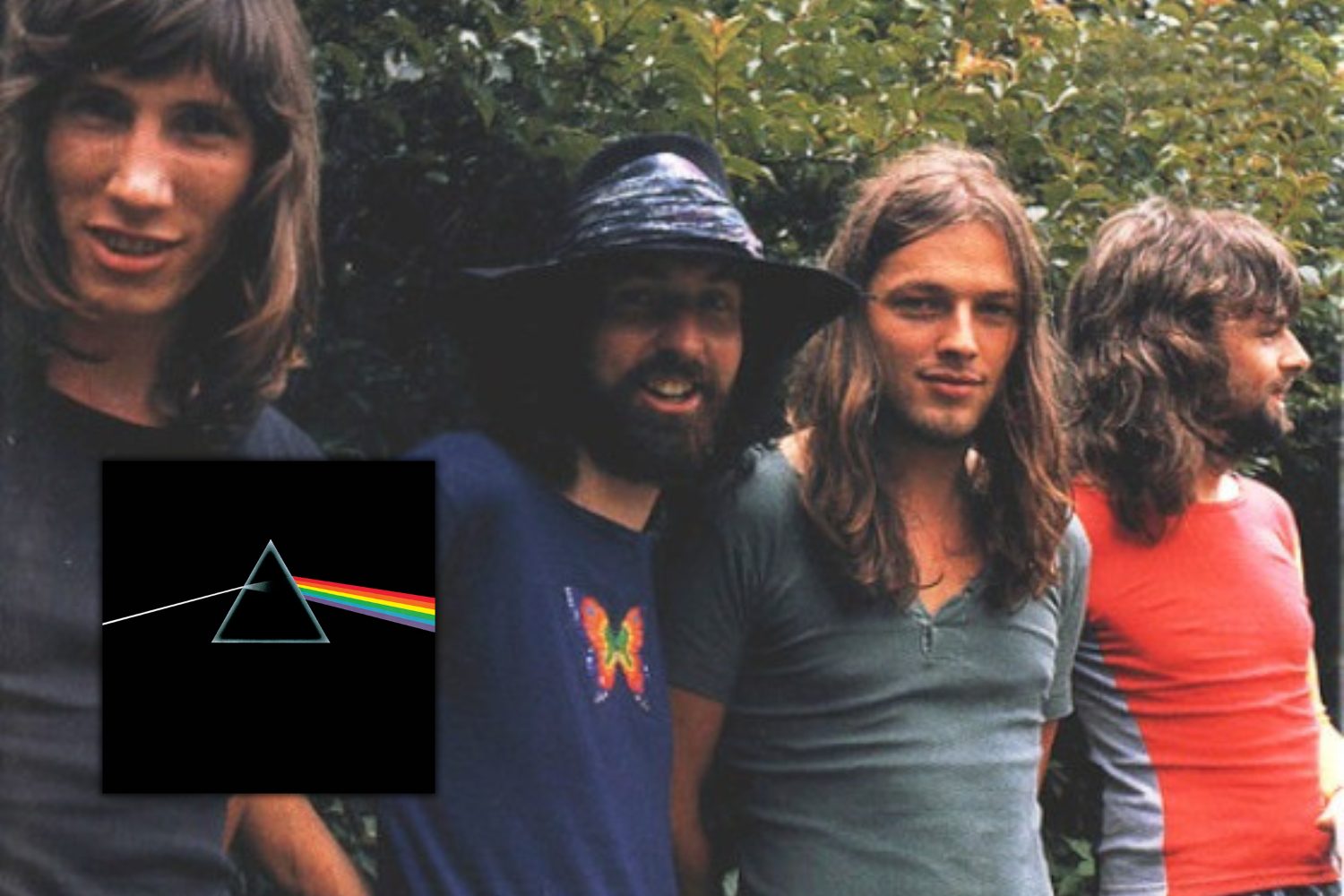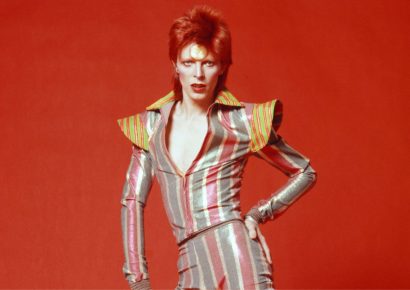Discover the gear behind Pink Floyd 'Dark Side Of The Moon', one of rock's most iconic records.
Released back in 1973, it’s undeniable that Pink Floyd’s The Dark Side Of The Moon changed the course of popular music forever. Fusing studio experimentation and technological revolutions such as tape manipulation and synthesisers with hauntingly brilliant songs featuring underlying themes of consumerism, mental health and the modern age, the album spent 741 weeks on the Billboard Top 100 from 1973 to 1988, and influenced millions of musicians all around the world. Recorded in London’s famous Abbey Road Studios, we take a deep dive into the plethora of equipment used by Pink Floyd on Dark Side of the Moon, one of the finest albums in music history.
Read up on all the latest features and columns here.
Guitars
‘The Black Strat’ – 1969 Fender Stratocaster
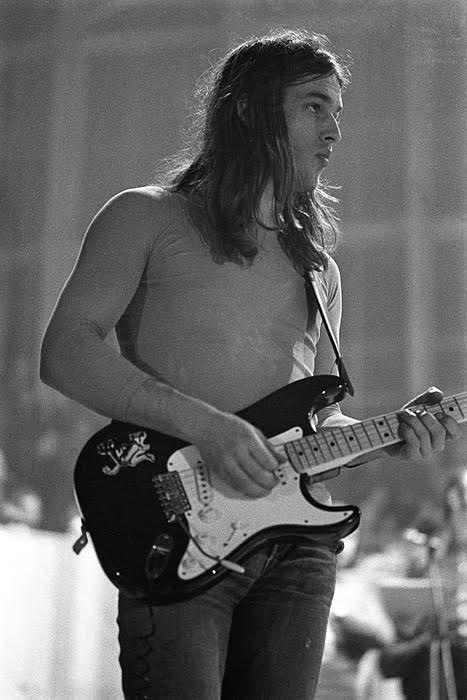
Known by fans and music lovers as ‘The Black Strat‘, guitarist David Gilmour’s modified Fender is undoubtedly one of the most iconic Stratocasters of the ’70s, and its role across The Dark Side Of The Moon revolutionised the electric guitar as a studio instrument.
While it’s now famously decked out with a black pickguard, during the recording of The Dark Side Of The Moon, Gilmour still had the original white pickguard installed on the guitar.
The instrument also had the original stock pickups during recording, although at one point Gilmour had a Gibson PAF wired into the middle pickup position.
Key modifications to the guitar included the addition of a ’63 neck, as well as a custom switch which allowed Gilmour to blend the tones of all three pickups at once, an effect which can be heard at various points across the record.
Bill Lewis Custom Guitar
Acquired in California while on the Atom Heart Mother Tour in 1970, Gilmour used a custom made guitar by renowned luthier Bill Lewis for various solos on The Dark Side Of The Moon, most notably employing the full 24 frets of the instrument in the latter section of ‘Money’.
Featuring a Honduran Mahogany body, dual humbuckers, and an ebony fretboard, Gilmour still owns the instrument to this day.
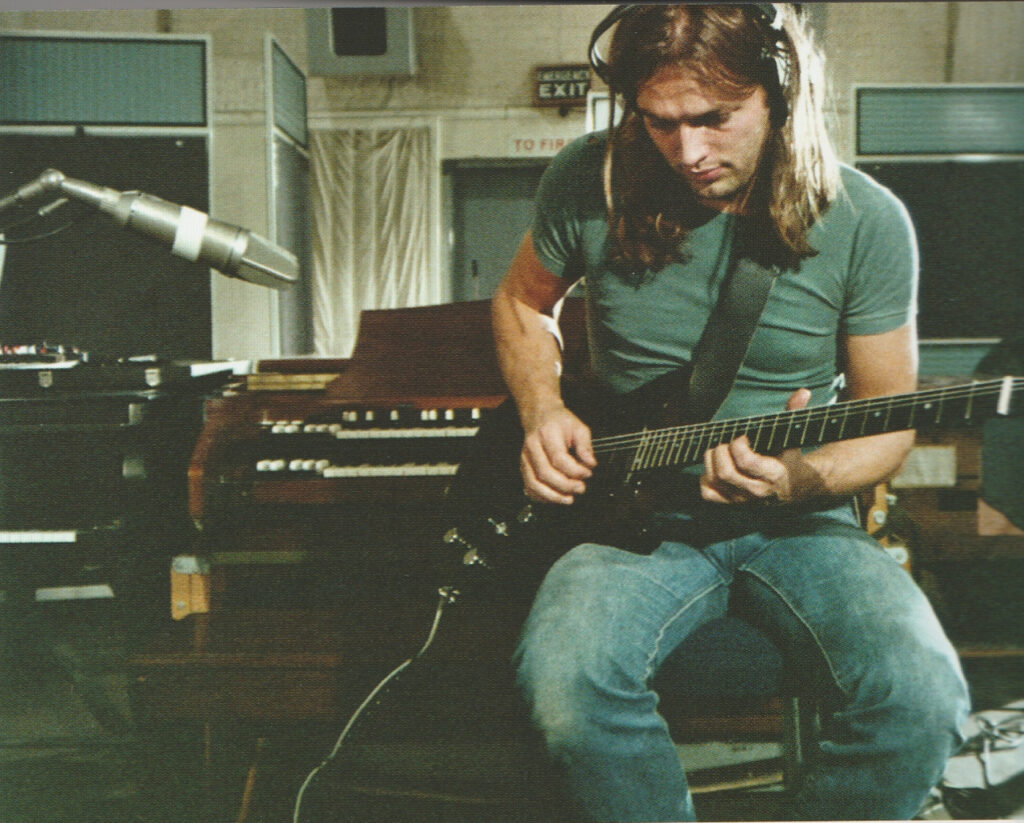
Fender 1000 Twin Neck Pedal Steel
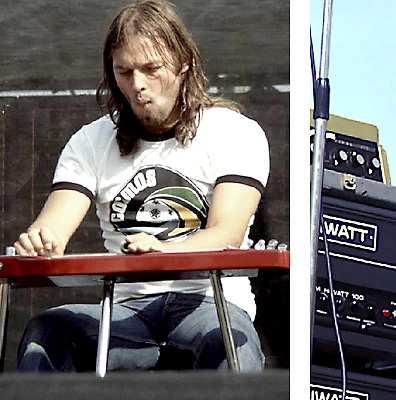
Tuned to an open G ( D G D G B E ) in the studio, Gilmour employed this twin neck pedal steel to record the slide guitar on ‘Breathe’ and the incredible ‘The Great Gig In The Sky.’
Bass
1970 Fender Precision Bass
Purchased in 1970 after his previous instrument was stolen on tour, Roger Waters’ Precision Bass almost matches Gilmour’s black Strat at the time, although both instruments would be extensively reworked later.
Throughout the recording of The Dark Side Of The Moon, Waters modified the bass by adding a Charvel neck with a maple fretboard, as well as adding a set of Kluson tuners to the new neck for extra stability.
Amplifiers
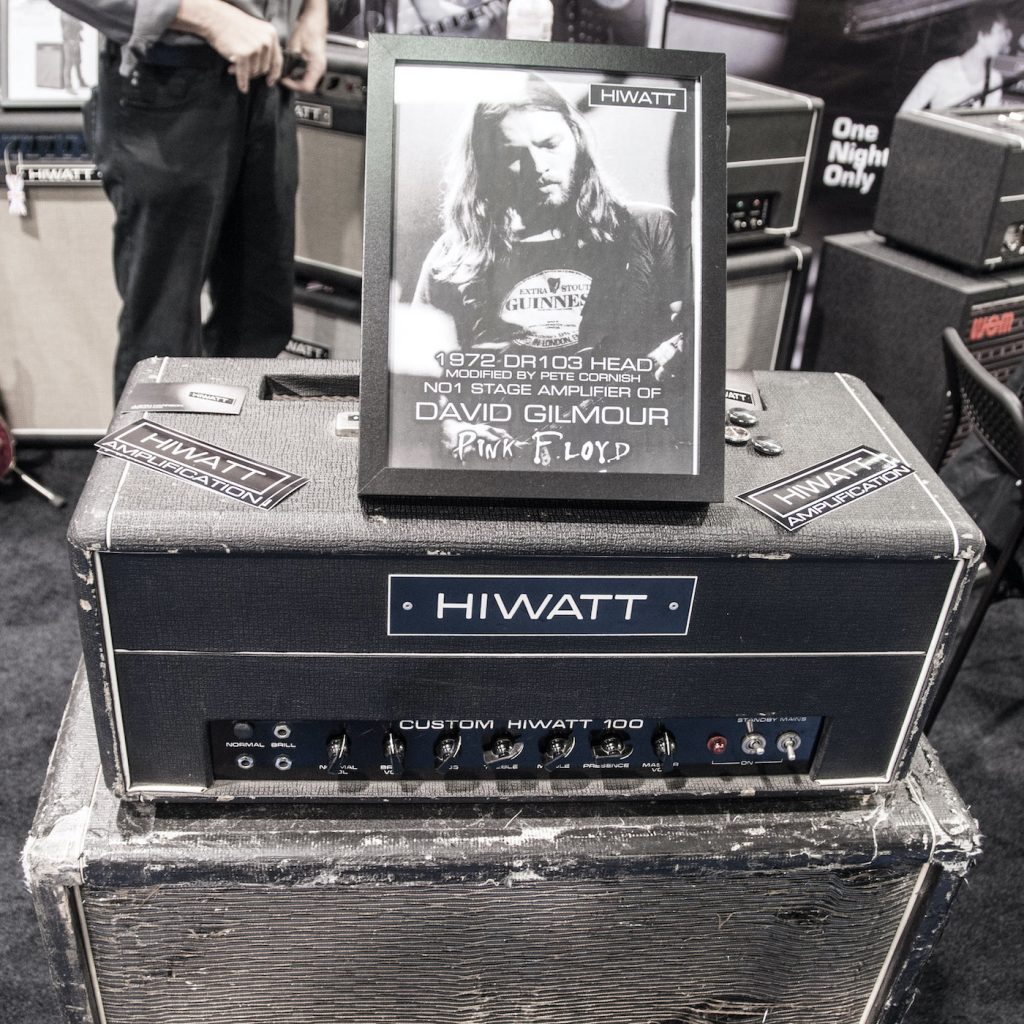
To achieve the creamy, saturated tones heard across Pink Floyd Dark Side of the Moon, Gilmour used a selection of Hiwatt DR103 All Purpose 100W heads, which were fitted out with Mullard EL34 power tubes and ECC83 pre-amp tubes.
For cleaner tones, Gilmour used a silverface Fender Twin Reverb combo, ocassionally plugging into Maestro Rover and Leslie Rotating Speaker Cabinets to create a swirling, ethereal guitar tone.
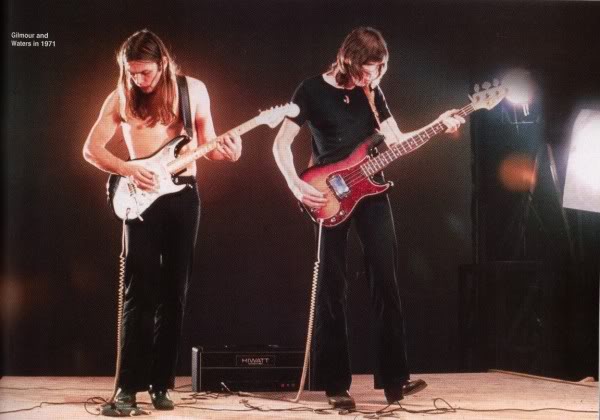
On bass, Waters plugged into a Hiwatt Custom 100 head which fed two WEM Super Starfinder 4×12 cabinets.
Waters also employed the use of a HH Electronic IC 100 solid state preamp, with the tremolo and echo from the unit being a key element midway through ‘One Of These Days’ from the band’s 1971 album Meddle.
Effects
The use of effects units across The Dark Side Of The Moon totally changed the way that musicians approached recording guitars.
Instead of focusing on a dry, overdriven tone that was popular at the time, Gilmour emphasised his expressive playing by treating his guitar with several effects units, making him one of the first guitarists to fully make use of the wonders of a pedalboard.
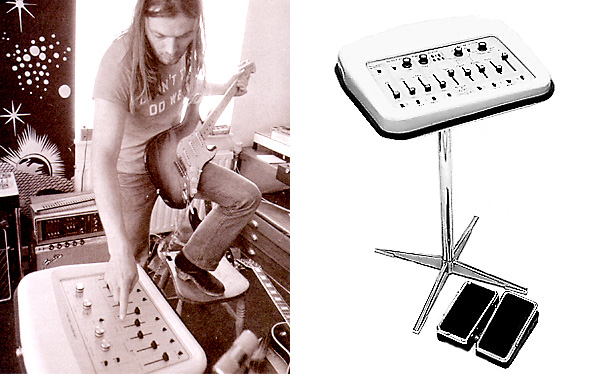
Gilmour’s main tools throughout the recording of the album included the Dallas Arbiter Fuzz Face (heard on ‘Money’ and ‘Time’), a Colorsound Powerboost overdrive, a Univox Uni-Vibe, a Binson Echorec II (which made use of a magnetic disk as opposed to a tape), a Kepex Tremolo Processor (heard on ‘Money’), and an EMS Synthi Hi-Fli, a prototype multi-effects unit with effects such as ring modulation, octave shifting, and auto-wah built in.
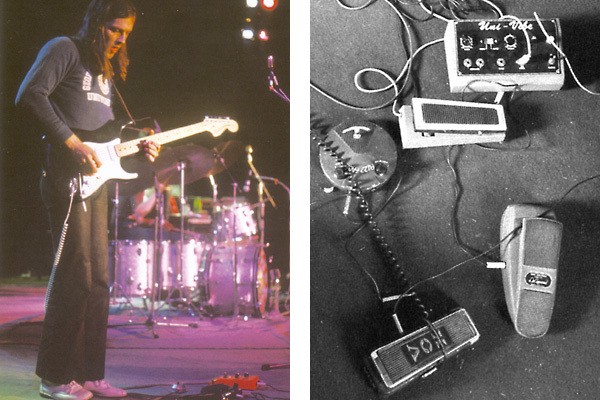
Live, Gilmour added a Dearmond volume pedal and a Vox Wah pedal, which can be seen above with his Fuzz Face and Uni-Vibe.
Keyboards / Synthesisers
Probably one of the most groundbreaking aspects of The Dark Side Of The Moon was keyboardist Richard Wright’s extensive experimentation with synthesisers.
A relatively new musical concept at the time, Wright fully embraced the synthesiser as the sound of the future, with classic synths such as the Moog Minimoog and ARP String Ensemble being heard across the record.
In addition, Wright experimented with processing effects through his other keyboards, notably plugging a wah-wah pedal into his Wurlitzer electric piano to sweep filter frequencies on some tracks.

In this image of Wright’s live setup from around the recording of The Dark Side Of The Moon, you can see Wright using an ARP String Ensemble, a Farfisa organ, a Wurlitzer electric piano, a Hohner D6 Clavinet, two Minimoogs, and a Hamond B3 Organ.
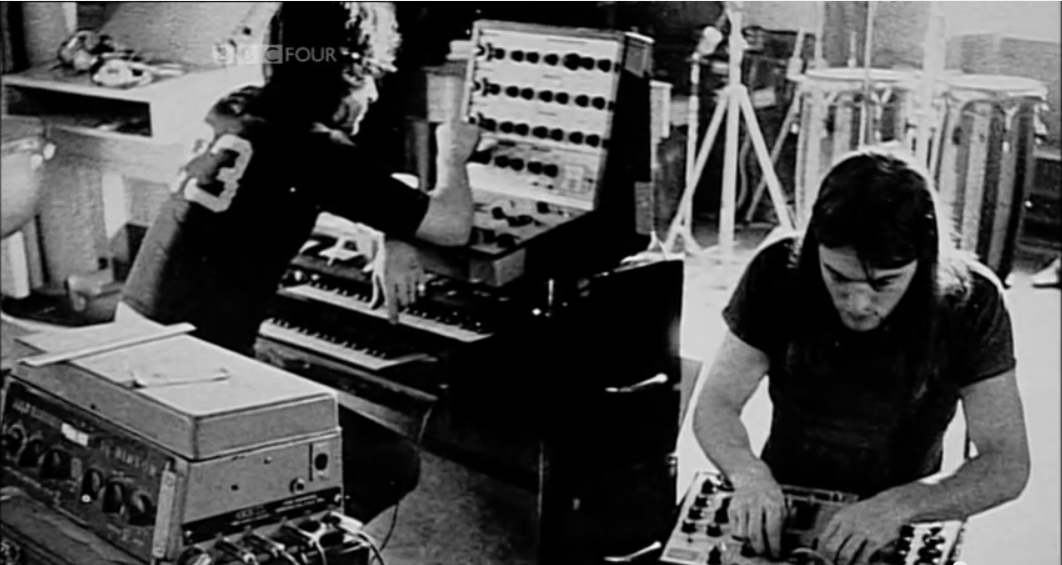
In addition to the aforementioned synths, Pink Floyd made extensive use of the EMS VCS-3, an analogue synthesiser created in 1969 which was a staple of prog-rock bands in the ’70s.
Gilmour, Waters, and Wright used the powerful oscillators, filters, noise generator and sequencer to create an array of electronic sounds across the record, such as the droning heartbeat that opens and closes the album.
The use of the EMS VCS-3 revolutionised the way synths were used in rock music, and above all, simply proved Pink Floyd were a cut above the rest of their time.
Keep up to date with all things Pink Floyd here.
